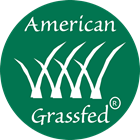As an ambitious program in Colombia demonstrates, combining grazing and agriculture with tree cultivation can coax more food from each acre, boost farmers’ incomes, restore degraded landscapes, and make farmland more resilient to climate change.
Over the last two decades, cattle rancher Carlos Hernando Molina has replaced 220 acres of open pastureland with trees, shrubs, and bushy vegetation. But he hasn’t eliminated the cows. Today, his land in southwestern Colombia more closely resembles a perennial nursery at a garden center than a grazing area. Native, high-value timber like mahogany and samanea grow close together along the perimeter of the pasture. The trees are strung with electric wire and act as live fences. In the middle of the pen grow leucaena trees, a protein-packed forage tree, and beneath the leucaena are three types of tropical grasses and groundcover such as peanuts.
The plants provide his 90 head of cattle with vertical layers of grazing, leading to twice the milk and meat production per acre while reducing the amount of land needed to raise them. His operation is part of a trend globally to sustainably coax more food from each acre — without chemicals and fertilizers — while reducing greenhouse gas emissions, increasing biodiversity, and enhancing the land’s ability to withstand the effects of climate change.
